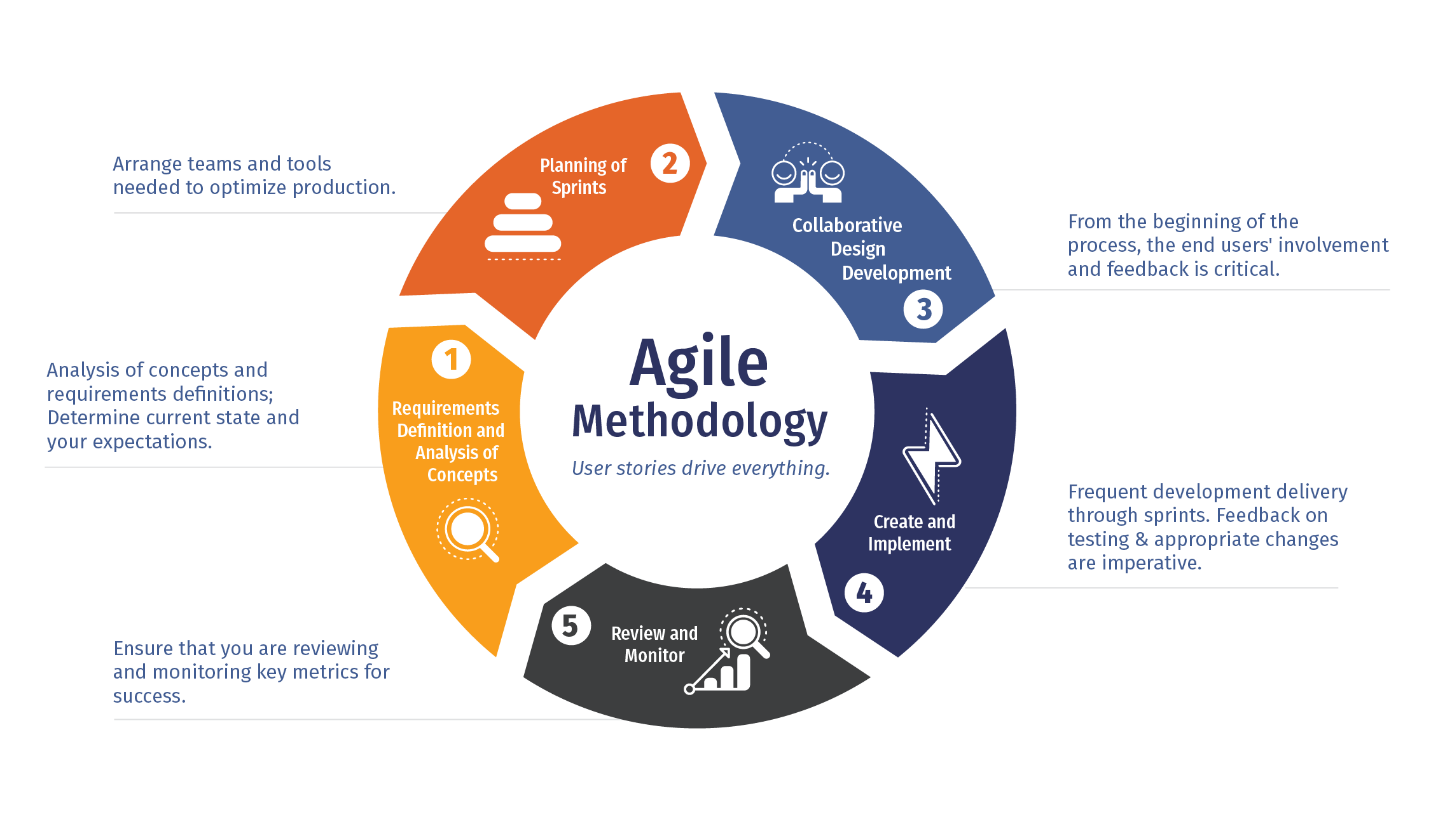What Is Agile | Understanding Agile Methodology
In today's dynamic business landscape, traditional project management methodologies often fall short in meeting the evolving demands of fast-paced, complex projects. In response to this, what is Agile methodology has emerged as a revolutionary approach, transforming the way teams collaborate, communicate, and execute projects. Agile is not merely a process but a mindset that values adaptability, collaboration, and customer-centricity. Let's delve deeper into the essence of Agile and its principles that have revolutionized project management.
Origins and Evolution of Agile
The roots of Agile can be traced back to the early 2000s when a group of software developers recognized the inefficiencies of the traditional Waterfall method. This led to the creation of the Agile Manifesto—a foundational document outlining the core values and principles of Agile development.
The Agile Manifesto emphasizes four key values:
Individuals and interactions over processes and tools: Agile prioritizes human collaboration and communication over rigid processes and tools.
Working software over comprehensive documentation: The focus is on delivering functional software rather than exhaustive documentation, promoting efficiency and adaptability.
Customer collaboration over contract negotiation: Agile encourages close collaboration with customers to ensure their needs are met throughout the development process.
Responding to change over following a plan: Agile embraces change and encourages teams to adapt quickly to evolving requirements, fostering flexibility and responsiveness.
Principles of Agile Methodology
The Agile Manifesto is supported by twelve principles that guide Agile implementation:
- Customer satisfaction through early and continuous software delivery: Agile promotes iterative development, allowing for regular delivery of valuable features to customers.
- Welcome changing requirements, even late in development: Embracing change enables the team to adapt and deliver a product that better aligns with customer needs.
- Frequent delivery of working software: Iterative cycles, or sprints, enable the continuous delivery of functional software, allowing for regular feedback and improvement.
- Collaboration between business stakeholders and developers: Constant communication and collaboration ensure that the development team understands and addresses business needs effectively.
- Supportive and trusting environment: Agile teams thrive in an environment where individuals are empowered, trusted, and supported to do their best work.
- Face-to-face communication is the most efficient: While digital tools are useful, direct communication fosters better understanding and alignment among team members.
- Working software is the primary measure of progress: Progress is measured by the functionality of the software delivered, not just by completed tasks or documentation.
- Maintaining a sustainable pace of work: Avoiding burnout is crucial. Agile emphasizes a sustainable work pace to ensure consistent productivity and quality.
- Continuous attention to technical excellence and good design: Focus on maintaining high-quality standards and adaptable designs to support future changes.
- Simplicity—the art of maximizing the amount of work not done—is essential: Prioritizing essential features and minimizing unnecessary work streamlines the development process.
- Self-organizing teams encourage the best architectures, requirements, and designs to emerge: Empowered teams make better decisions and produce better outcomes.
- Regular reflections on how to become more effective: Continuous improvement through retrospectives allows teams to refine processes and enhance efficiency.
Agile Frameworks and Methodologies
Numerous frameworks and methodologies fall under the Agile umbrella, each offering its own set of practices tailored to specific contexts. Some of the most popular ones include:
Scrum: Perhaps the most widely adopted Agile framework, Scrum divides work into time-boxed iterations called sprints. It involves specific roles (Product Owner, Scrum Master, and Development Team) and ceremonies (Sprint Planning, Daily Stand-ups, Sprint Review, and Retrospective).
Kanban: Kanban visualizes work on a board, allowing teams to track progress and optimize workflow. It focuses on continuous delivery by limiting work in progress.
Extreme Programming (XP): XP emphasizes engineering practices like pair programming, test-driven development, continuous integration, and frequent releases to ensure high-quality software.
Lean Agile: Combining Agile principles with Lean thinking, this approach aims to eliminate waste, optimize resources, and continuously improve processes.
Benefits of Agile Methodology
The adoption of Agile methodology offers several benefits to organizations:
Flexibility and Adaptability: Agile enables teams to respond swiftly to changing requirements and market dynamics, fostering adaptability.
Customer Satisfaction: Regular feedback and iterative development ensure that customer needs are met more effectively, leading to higher satisfaction.
Enhanced Collaboration: Emphasis on teamwork and communication fosters better collaboration among team members and stakeholders.
Faster Time-to-Market: Agile's iterative approach allows for quicker delivery of usable features, reducing time-to-market significantly.
Improved Quality: Continuous testing and feedback loops contribute to the early detection and resolution of issues, resulting in higher quality deliverables.
Higher Morale and Engagement: Empowered teams in an Agile environment experience increased motivation and engagement due to autonomy and shared responsibility.
Challenges and Considerations
While Agile offers numerous advantages, its adoption can also present challenges:
Organizational Resistance: Transitioning to Agile may face resistance from established processes, requiring a cultural shift within the organization.
Skill and Expertise: Mastery of Agile practices demands training, experience, and a learning curve for teams unfamiliar with the methodology.
Scaling Agile: Scaling Agile practices to larger teams or complex projects requires careful planning and adaptation.
Client Collaboration: Continuous client involvement may be challenging due to their time constraints or lack of understanding of Agile practices.
Conclusion
Agile methodology has revolutionized project management by prioritizing adaptability, collaboration, and customer satisfaction. Its principles and frameworks have empowered teams to deliver high-quality products efficiently in a rapidly changing business landscape. While Agile presents challenges, its benefits in terms of flexibility, customer-centricity, and quicker delivery make it an invaluable approach for organizations aiming to thrive in today's competitive markets. Embracing the Agile mindset is not just about adopting a methodology—it's about embracing a culture of continuous improvement and adaptability, essential for success in the modern business world.

Comments
Post a Comment